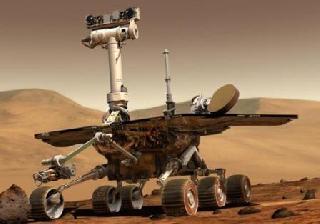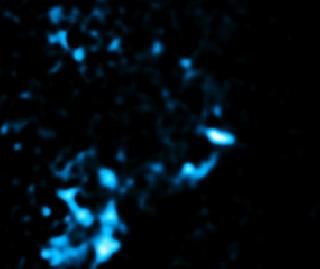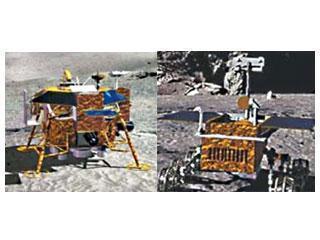
Artist concept of Mars Exploration Rover. Photo: NASA/JPL-Caltech.
WASHINGTON (PTI): Fresh water suitable for life flowed on the surface of the Red Planet four billion years ago, according to new evidence found by NASA's Mars rover, Opportunity.
The findings from rock samples collected and examined by Opportunity have confirmed an ancient wet environment that was milder and older than the acidic and oxidising conditions revealed by rocks the rover examined previously, NASA said.
"While Mars is too cold now to have the liquid water needed for life, we've had evidence for past water activity on the planet from satellite images of valleys and analysis of rocks by the Rovers," Dr Paulo de Souza, who is on the science team led by Cornell University's Professor Steven Squyres, said.
"But the water that once shaped those landscapes and minerals was as acidic as vinegar," de Souza from the Commonwealth Scientific and Industrial Research Organisation (CSIRO) said in a statement.
"Our latest research has found not only the earliest episode of water activity documented yet by the Opportunity Rover, but that the geochemistry of the 4 billion year old rocks indicates extensive deposits of past water that's among the freshest, most life-sustaining found so far anywhere on Mars," said de Souza.
"If there was ever life on Mars, then this would have been the mud for it to live in," he said.
On the day of its 10th anniversary on the Red Planet, Opportunity is examining the rim of the Endeavour Crater.
It has driven 38.7 kilometres from where it landed on January 24, 2004. The site is about halfway around the planet from NASA's latest Mars rover, Curiosity.
To find rocks for examination, the rover team steered Opportunity in a loop, scanning the ground for promising rocks in an area of Endeavour's rim called Matijevic Hill.
The mineral-mapping instrument on NASA's Mars Reconnaissance Orbiter (MRO) detected evidence on Matijevic Hill of a clay mineral known as iron-rich smectite.
"These rocks are older than any we examined earlier in the mission, and they reveal more favourable conditions for microbial life than any evidence previously examined by investigations with Opportunity," said Opportunity Deputy Principal Investigator Ray Arvidson.
The Opportunity team set a goal to examine this mineral in its natural context - where it is found, how it is situated with respect to other minerals and the area's geological layers - a valuable method for gathering more information about this ancient environment.
Researchers believe the wet conditions that produced the iron-rich smectite preceded the formation of the Endeavor Crater about 4 billion years ago.
The findings appear in the journal Science.
 Previous Article
Previous Article Next Article
Next Article













The Indian Air Force, in its flight trials evaluation report submitted before the Defence Ministry l..
view articleAn insight into the Medium Multi-Role Combat Aircraft competition...
view articleSky enthusiasts can now spot the International Space Station (ISS) commanded by Indian-American astr..
view article